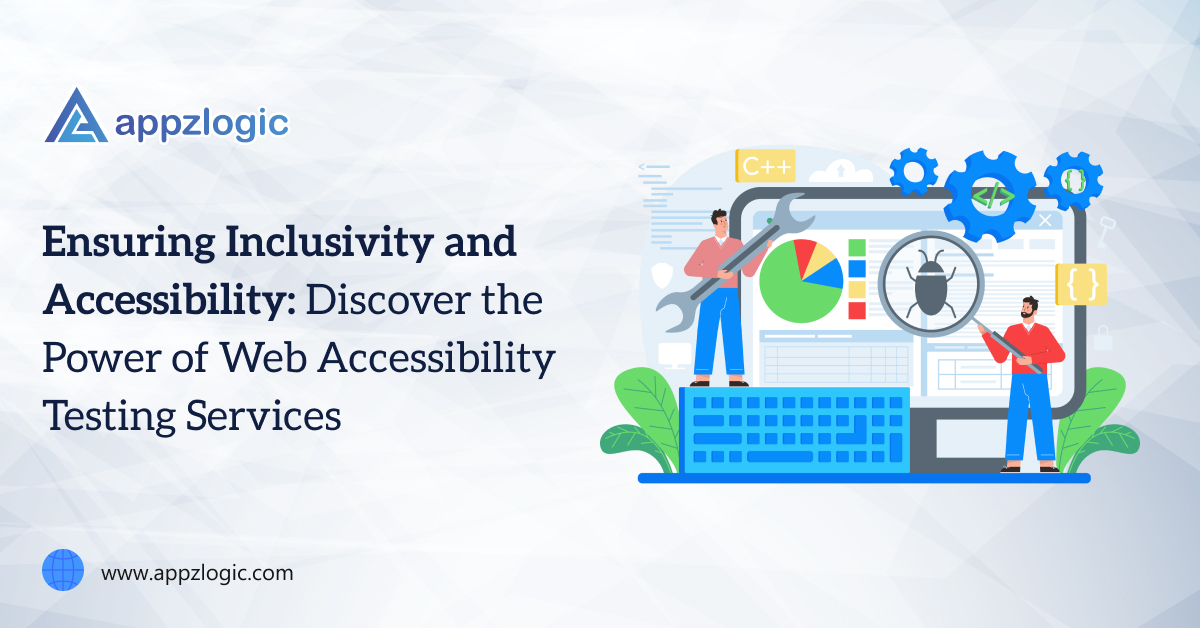Introduction
In the fast-paced and interconnected world of today, websites and applications have become an indispensable part of our daily lives. From online shopping and seamless communication to accessing vital information and essential services, the digital landscape has dramatically transformed the way we interact with the world around us. However; amidst this digital revolution, it is crucial to recognize that not all users possess the same abilities and advantages. Ensuring that digital experiences are inclusive and accessible to everyone, including those with disabilities, has become an imperative goal. This is where the power of accessibility testing steps into the spotlight, playing a pivotal role in fostering a more inclusive and diverse digital environment.
Accessibility Testing and Its Importance:
Accessibility testing is a critical process that evaluates the accessibility of digital products, such as websites and applications, for users with disabilities. Its aim is to identify and overcome barriers that might hinder users with disabilities from fully accessing and utilizing these digital products. Going beyond mere legal compliance, accessibility testing is about creating inclusive experiences that cater to the diverse needs of all users. Its significance cannot be underestimated, especially when considering that around 15% of the global population, over 1 billion people, live with various disabilities, affecting how they perceive and interact with digital content. By conducting thorough accessibility testing, organizations can ensure that their digital products are not only compliant but also genuinely usable and accessible to everyone, regardless of their abilities.
Accessibility Testing Best Practice
To ensure a comprehensive evaluation of accessibility; a systematic approach is essential for identifying and resolving potential issues. Here are some best practices that organizations can adopt to conduct effective accessibility testing:
Use a Combination of Automated and Manual Testing for Effective Accessibility Assessment
Automated testing tools can be valuable in identifying specific accessibility issues like missing alt text or invalid markup. However, they may not catch all issues, such as keyboard accessibility or color contrast. To ensure a thorough evaluation, manual testing is essential. By combining both automated and manual testing, organizations can achieve a comprehensive assessment of the accessibility of their digital products.
Test with Real Users with Disabilities: Gaining Valuable Insights for Enhanced Accessibility
Incorporating users with disabilities into the testing process yields invaluable feedback on their firsthand experiences. Real users bring unique insights into the challenges they encounter while using digital products, identifying barriers that might escape automated or manual testing. Leveraging user feedback becomes a powerful tool in enhancing the accessibility of digital products, fostering a more inclusive and user-friendly experience for all.
Ensure Consistent Accessibility: Test Across Diverse Devices and Platforms
Users access products on a wide array of devices and platforms, ranging from desktop computers to mobile phones and tablets, across various web browsers and operating systems. Testing for accessibility on different devices and platforms is crucial to ensure a seamless and inclusive user experience across all interfaces. By conducting comprehensive tests across this diverse landscape, organizations can guarantee consistent accessibility and cater to the needs of all users, regardless of their device or platform preferences.
Comprehensive Accessibility Testing: Embracing Diverse Disabilities
Comprehensive accessibility testing is crucial and should encompass a wide range of disabilities, including visual, hearing, cognitive, motor, and others. Each type of disability may have different accessibility requirements, necessitating thoughtful consideration during the testing process. For instance, testing for screen reader compatibility is essential for users with visual impairments, while ensuring captioning and transcripts addresses the needs of users with hearing impairments. Additionally, testing for keyboard accessibility becomes vital for users with motor impairments. By embracing this comprehensive approach, organizations can foster a truly inclusive digital experience, accommodating the unique needs of all users, regardless of their disabilities.
Adhere to WCAG Guidelines and Industry-specific Standards for Enhanced Accessibility
As previously highlighted, WCAG stands as the global benchmark for web accessibility, making it essential for organizations to align with these guidelines. Additionally, organizations should also consider other relevant accessibility standards pertinent to their industry or region. These standards offer specific criteria and techniques, providing a roadmap for organizations to follow in their accessibility testing journey. By adhering to these guidelines, organizations can ensure an inclusive digital experience that caters to diverse user needs and fosters a more accessible online environment for all.
In this ever-connected world, accessibility testing has evolved into a vital cornerstone that transcends mere legal requirements; it is the bedrock of creating truly inclusive digital experiences. By incorporating best practices, adhering to relevant guidelines and standards, actively involving users with disabilities, and seamlessly integrating accessibility testing into your product development process, you open pathways for equal access to your offerings, catering to users of diverse abilities. This not only empowers users with disabilities but also elevates the overall user experience, broadens your user base, and reinforces your organization’s brand reputation and dedication to social responsibility. Embrace the remarkable potential of accessibility testing to unlock the true essence of your products, forging an inclusive digital realm where everyone finds a welcoming and appreciative space.




